Brown Patch Arrives
Now that much of Texas has had some rain, and now that most of Texas has had cooler weather as well, brown patch fungus has been energized for its fall run. It shows up every year about now, and this is what I saw in our yard yesterday morning.
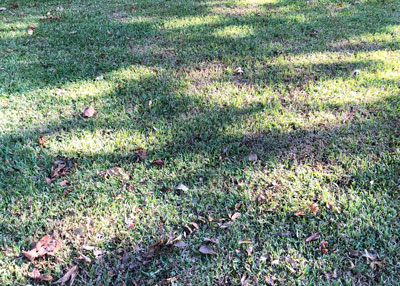
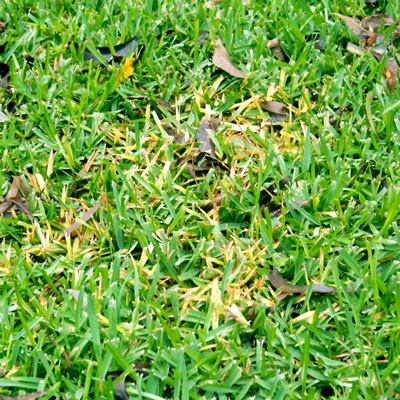
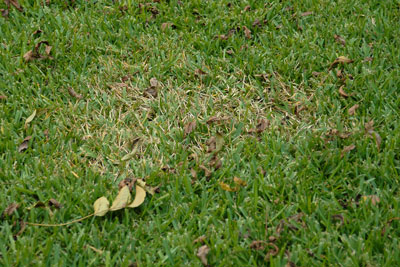
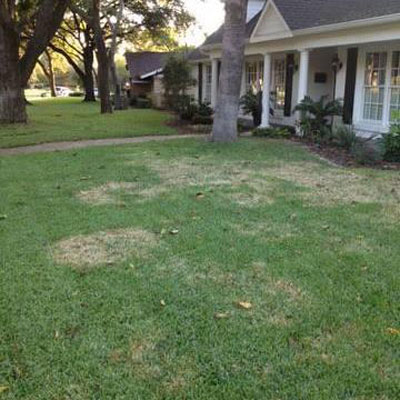
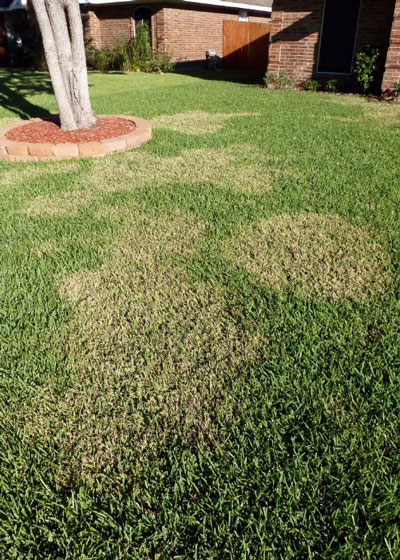
Brown patch is a disease of the leaf blades…
If you pull on a few of the yellowed or browned blades you’ll find that they pull loose from their runners without much resistance. The bases of the leaf sheaths will be rotted because that’s where the fungus invades. Runners and roots remain unaffected.
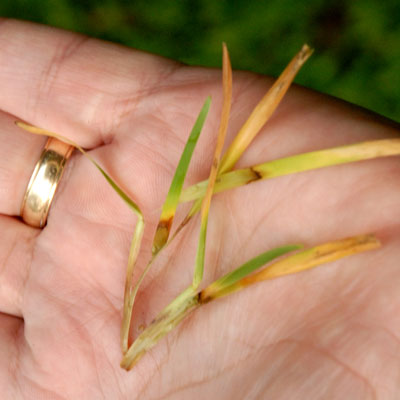
What that tells you is that the lawn has a good chance of surviving an outbreak of brown patch without major damage. If you buy and apply a fungicide labeled for turf patch-type diseases from your local nursery, hardware store or feed store, it should stop the spread of brown patch beyond where it is currently involved.
Areas that have been infected may coast to a stop, so patches may become somewhat more severe for a few days, but if you go a few weeks without a killing freeze, it’s not uncommon for the patches to green up and start growing again.
Left untreated, however, brown patch can weaken the St. Augustine to a point that extreme winter weather can do damage that would not have been done otherwise. Put in simpler terms, you definitely do want to treat for brown patch. And, in the meantime, do all your lawn watering from 6-10 a.m. You don’t want to leave your lawn wet overnight since that fosters the fungus.
